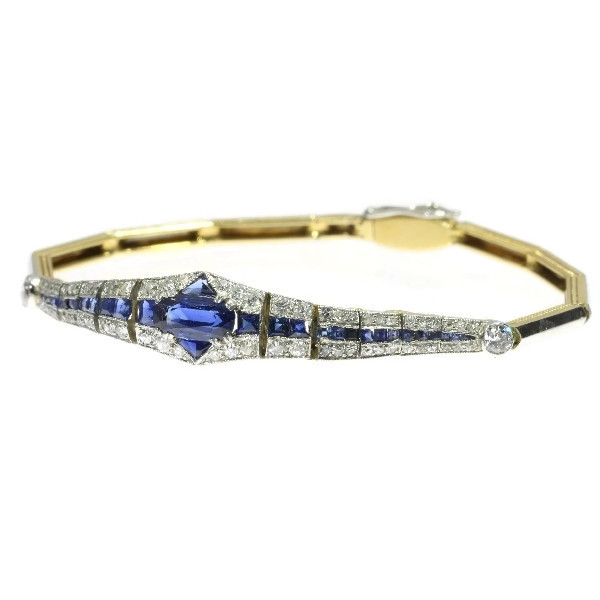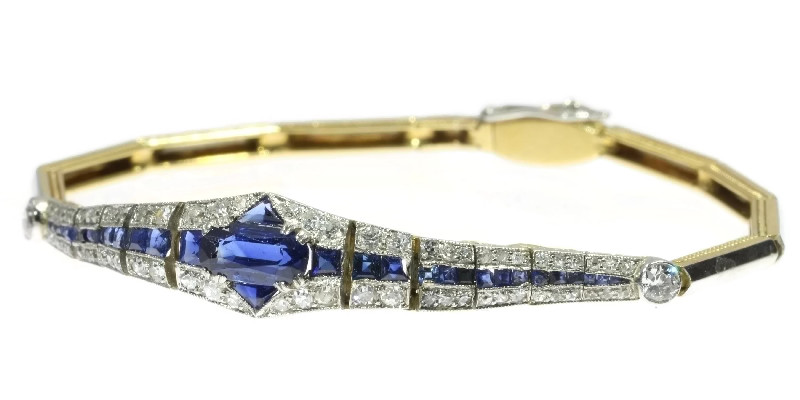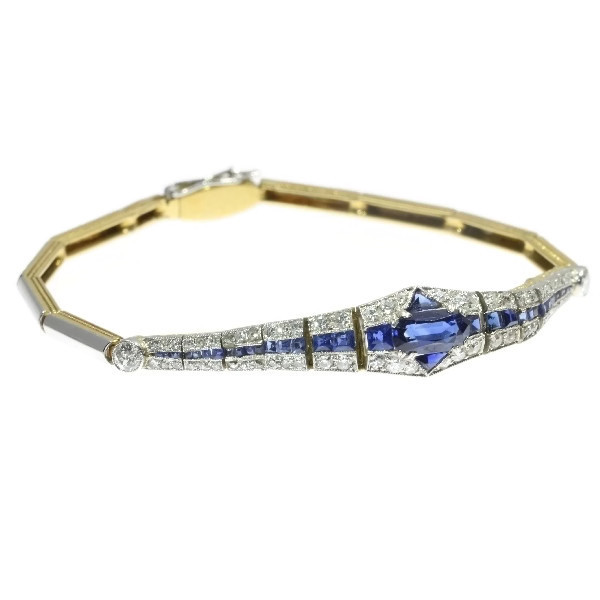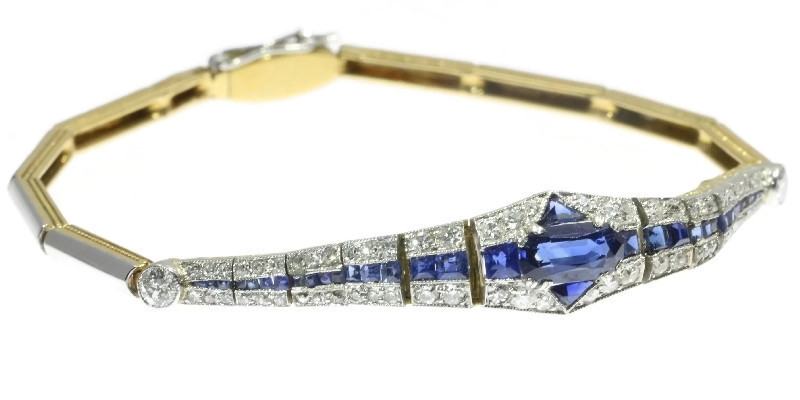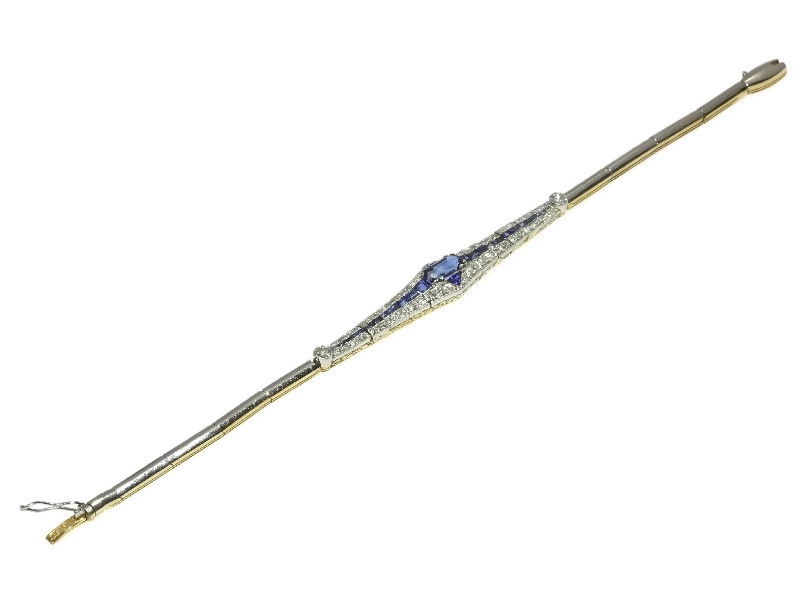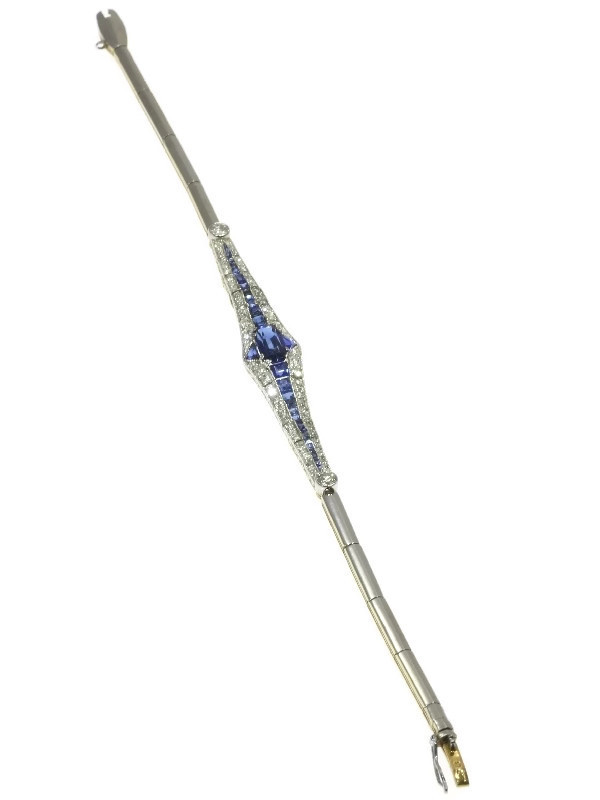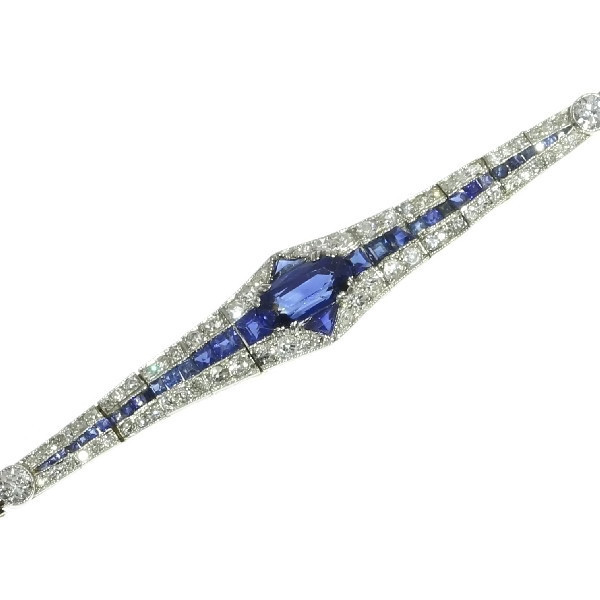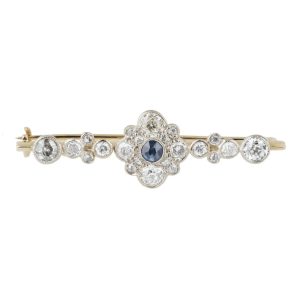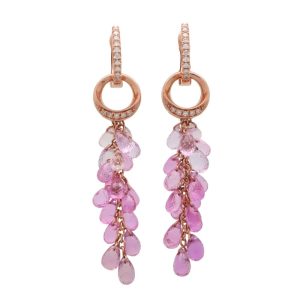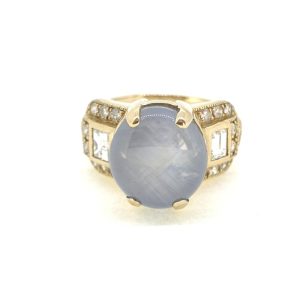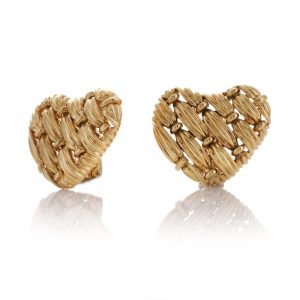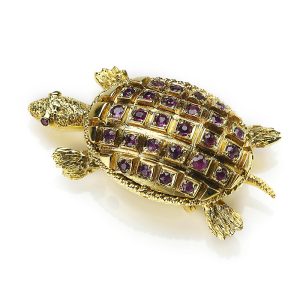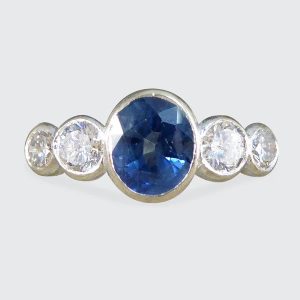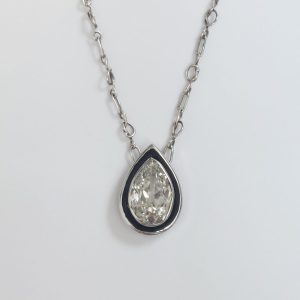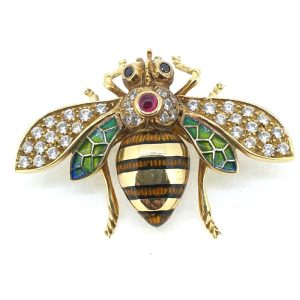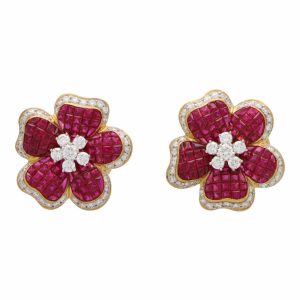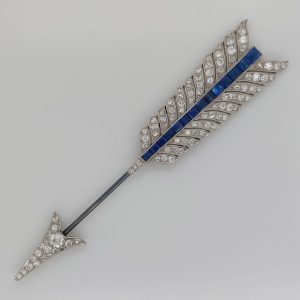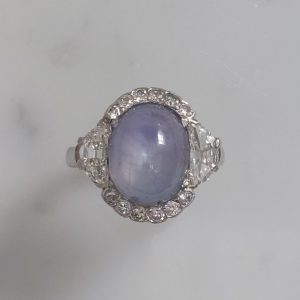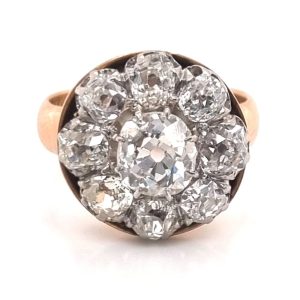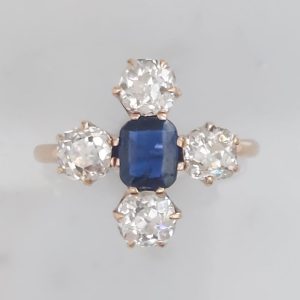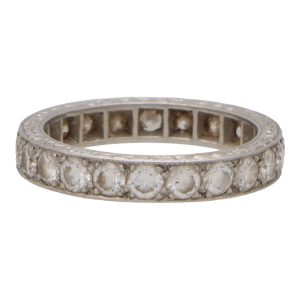Fine Antique Art Deco Dutch Sapphire and Diamond Bracelet
High-quality Dutch Art Deco sapphire and diamond bracelet.
A four-point star of 35 sapphires signifies this Art Deco bracelet with an 18K white gold top and an 18K yellow gold engraved base. Surrounded by 68 single brilliant-cut diamonds, the blue star appears out of an oval cut centre with two triangular cut points and with two arms of 32 sapphires running to two old European cut diamonds, which contain the star’s reach within this jewel from 1920 for you to wear.
Antique jewellery object group: bracelet
Condition: good condition (two hinges of three links seem to be repaired in the past fixing them in one position -this is not visible while wearing and doesn’t influence the ease and joy of wearing)
Country of origin: Netherlands
Style: Something between Art Deco and Belle √âpoque – Art Deco is an eclectic artistic and design style which had its origins in Paris in the first decades of the 20th century. The style originated in the 1920s and continued to be employed until afterWorld War II. The term “art deco” first saw wide use after an exhibition in 1966, referring to the 1925 Exposition Internationale des Arts D√©coratifs et Industriels Modernes that was the culmination of high-end style moderne in Paris. Led by the best designers in the decorative arts such as fashion, and interior design, Art Deco affected all areas of design throughout the 1920s and 1930s, including architecture and industrial design, as well as the visual arts such as painting, the graphic arts and film. At the time, this style was seen as elegant, glamorous, functional and modern.
Art Deco and the Belle √âpoque (French for “Beautiful Era”) was a period in European social history that began during the late 19th century and lasted until World War I. Occurring during the time of the French Third Republic and the German Empire, the”Belle √âpoque” was named in retrospect, when it began to be considered a “golden age” the major powers of Europe, new technologies improved lives and the commercial arts adapted Renaissance and eighteenth-century styles to modern forms. In the newly rich United States, emerging from the Panic of 1873, the comparable epoch was dubbed the Gilded Age. In the United Kingdom, this epoch overlaps the end of what is called the Victorian Era there and the period named the Edwardian Era.or more info on styles
Style specifics: This is something between Belle Époque and Art Deco.
The Belle √âpoque (French for “Beautiful Era”) was a period in European social history that began during the late 19th century from the Franco-Prussian War (1870-1871) and lasted until World War I (1914-18).
Occurring during the time of the French Third Republic and the German Empire, the “Belle √âpoque” was named in retrospect, when it began to be considered a “golden age” the major powers of Europe, new technologies improved lives and the commercial arts adapted Renaissance and eighteenth-century styles to modern forms.
In the newly rich United States, emerging from the Panic of 1873, the comparable epoch was dubbed the Gilded Age. In the United Kingdom, this epoch overlaps the end of what is called the Victorian Era there and the period named the Edwardian Era.
In the Belle √âpoque cheap coal and cheap labour contributed to the cult of the orchid and made possible the perfection of fruits grown under glass, as the apparatus of state dinners extended to the upper classes; champagne was perfected during the Belle √âpoque. Exotic feathers and furs were more prominently featured in fashion than ever before, as haute couture was invented in Paris, the centre of the Belle √âpoque, where fashion began to move in a yearly cycle; in Paris restaurants such as Maxim’s achieved a new splendour and cachet as places for the rich to parade, and the Op√©ra Garnier devoted enormous spaces to staircases as similar showplaces.
After mid-century, railways linked all the major cities of Europe to spa towns like Biarritz and Deauville; their carriages were rigorously divided into first-class and second-class, but the super-rich now began to commission private railway coaches, as exclusivity was a hallmark of opulent luxury. Bohemian lifestyles gained a different glamour, pursued in the cabarets of Montmartre.
Art Deco
Abstract motives and geometrical forms are quite typical for the Art Deco period. Art Deco moved away from the soft pastels and organic forms of its style predecessor, Art Nouveau, and embraced influences from many different styles and movements of the early 20th century, including Neoclassical, Constructivism, Cubism, Modernism, and Futurism. Its popularity peaked in Europe during the Roaring Twenties and continued strongly in the United States through the 1930s. Although many design movements have political or philosophical roots or intentions, Art Deco was purely decorative.
Period: ca. 1920
Material: 18K bi-colour (yellow and white) gold
Diamonds: Two old European cut diamonds with a total estimated weight of approx. 0.20 ct. and 68 single brilliant-cut diamonds (also called 8/8) with a total estimated weight of approx. 1.10 ct.
Note: All diamond weights, colour grades and clarity are approximate since the stones were not removed from their mounts to preserve the integrity of the setting.
Total diamond weight: approx. 1.30 ct.
Precious stones: 35 sapphires.
Birthstones: Diamond is the birthstone (or month stone) for April and sapphire for September.
Hallmarks: Dutch hallmark for 18K gold
Dimensions: length 16,00 cm (6,30 inch)
Weight: 10.70 gram (6.88 dwt)
Product SKU
AD-13042-0008
£5,550
1 in stock
Fine Antique Art Deco Dutch Sapphire and Diamond Bracelet
Price: £5,550 | Product SKU: AD-13042-0008
Please use the form below to enquire about this item. Alternatively you can call us directly on 020 7438 2046 or email us at Sales@jewellerydiscovery.co.uk.

